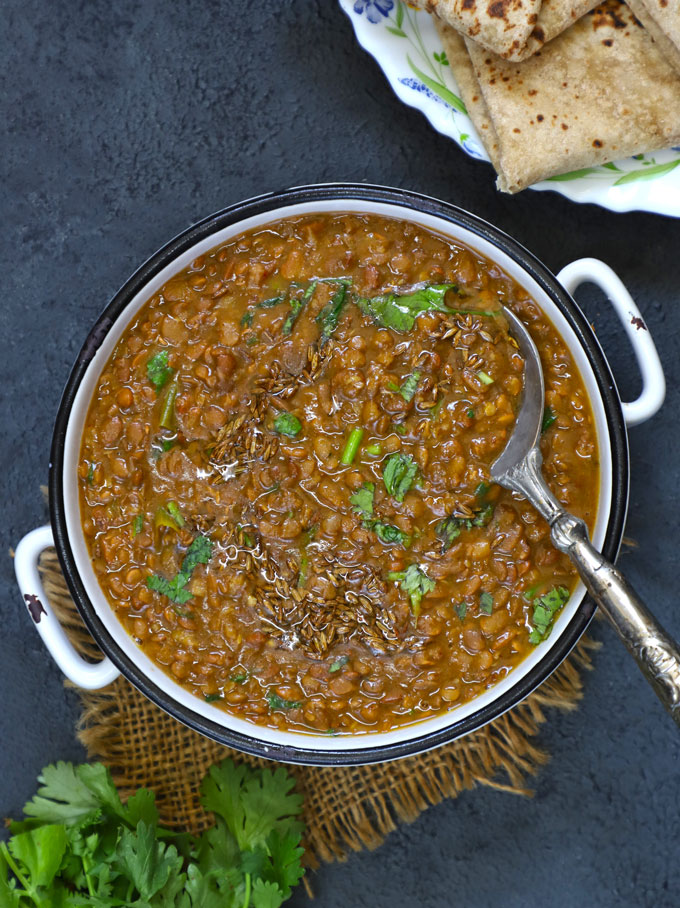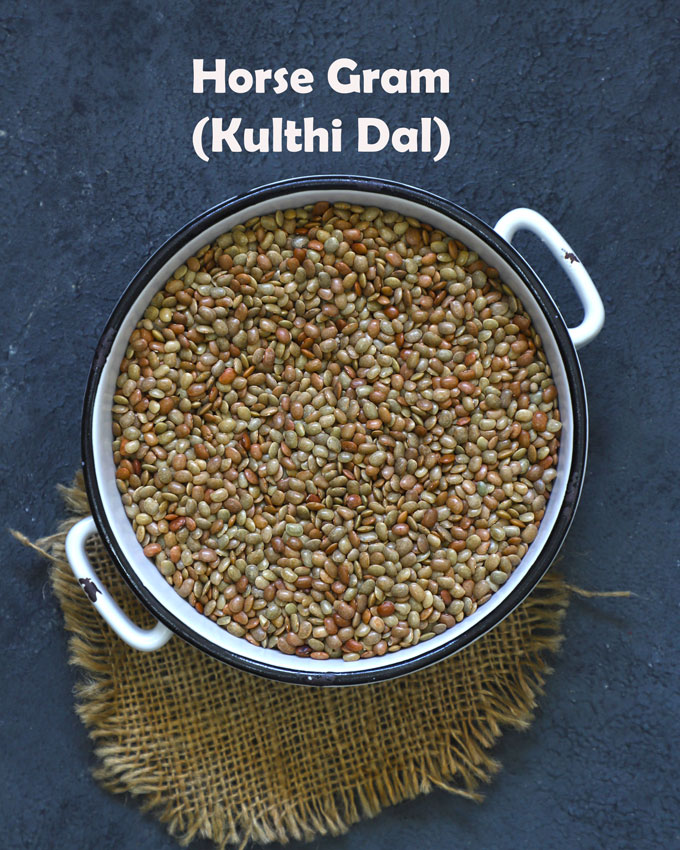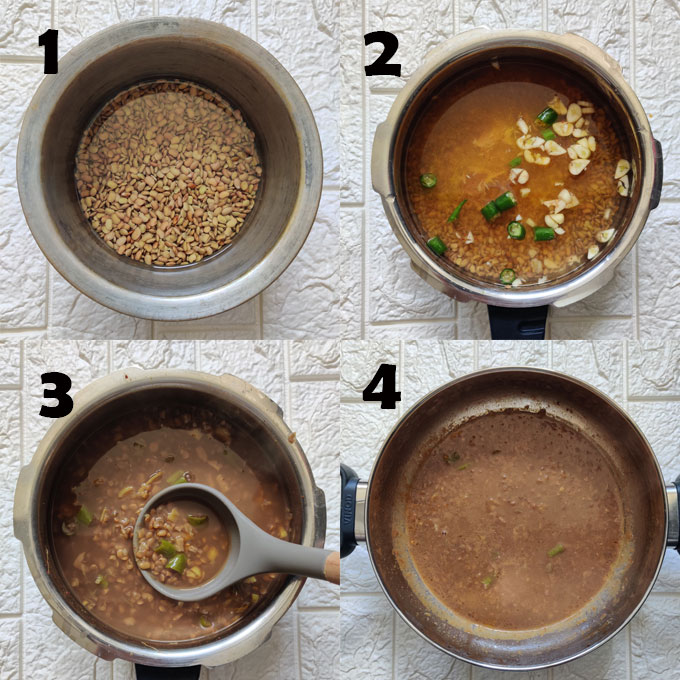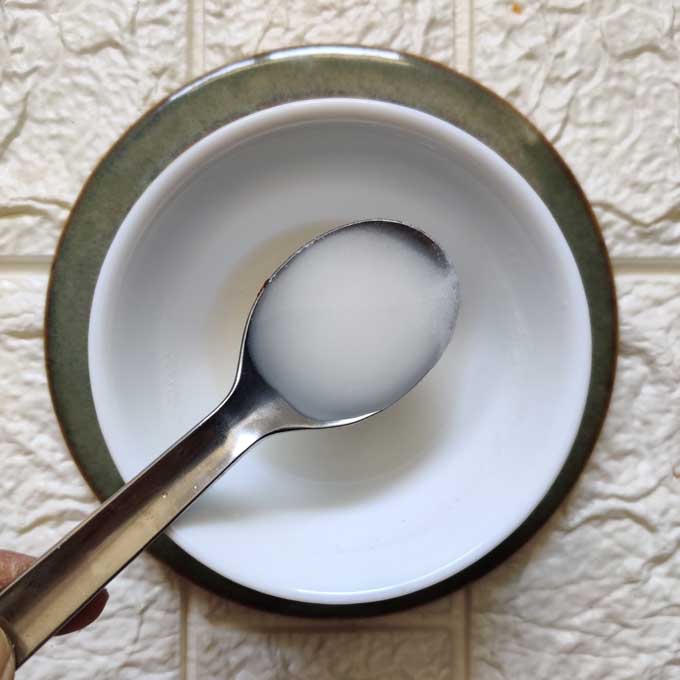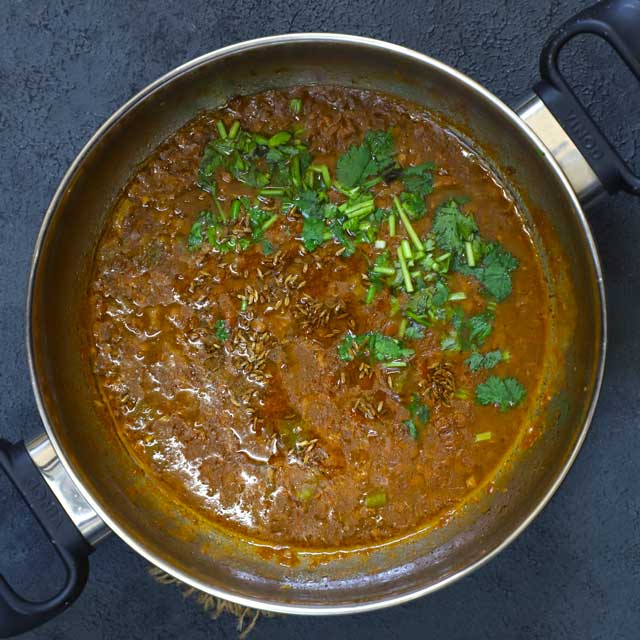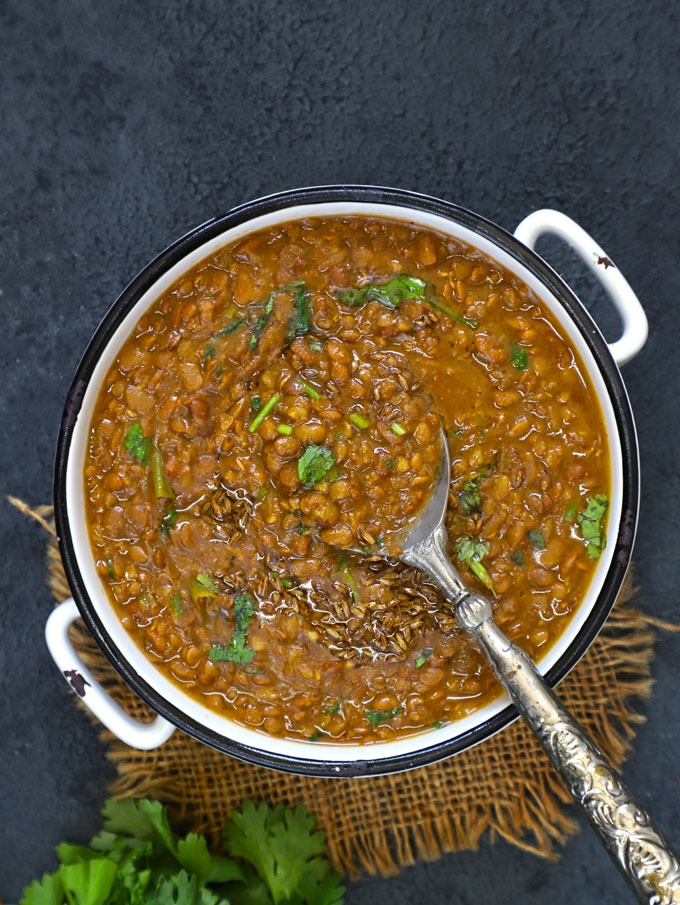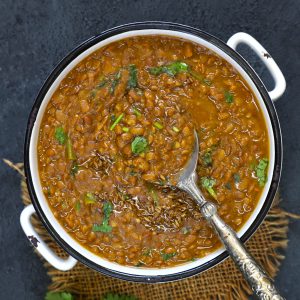About Horse Gram
To many, the name at first name, horse gram, sounds weird. The whole legume seeds are fed to the cattle, which explains the story behind this name. Horse gram is known as Gahat, Kulath, or Kulthi Dal. Like many other native ingredients of Uttarakhand and other hilly terrains, Gahat is grown with many hardships on the terrace farms. Horse Gram has a high nutritional value and tons of health benefits.
It is high in proteinIt lowers blood sugar It reduces constipationIt is a great antioxidantIt helps in removing kidney stones
In short, it is a fantastic superfood recommended by many professional dieticians and nutritionists.
Pahadi Style Gahat Dal
I come from a Kumaoni family in Uttarakhand. My mother, who has spent a considerable part of her teen years in her paternal village – Paithani- greatly affection for local produce and Kumoni Cuisine. During our growing years, one of her distant cousins, every year, before the first winter breeze, would send one bag full of Pahadi Gahat along with Pahadi Bhatt (black soybean) and Mandua flour. Pahadi Gahat Ki Dal with bhaat (steamed rice) is a staple combination in our Kumaoni household. In a heavy traditional cast iron pot, Gahat Dal is stewed with aromatic ginger, garlic, and Jumbu/Jimbu (a local herb). The gahat ki dal is slow-cooked for quite some time for the flavors to develop and to tease the senses of hungry goblins roaming around with its alluring aroma. And at last time for the sizzling melodrama of Indian kitchen – tadka (tempering), with a ladle full of ghee, cumin, and herbs.
Ingredients Required
Horse Gram: It is a brown color legume commonly known as Gahat or Kulthi Ki Dal in India. Herbs: Ginger, Garlic, Jumbu (Jimbu), Gandrain Spices: Cumin Seeds, Asafoetida, Red Chili Powder, Turmeric Powder Ghee: It balances the dal’s protein and gives it a delicious taste. Hence, I would not recommend using any other cooking oil or fat. Rice Flour: A slurry or paste of rice flour with water gives a luscious texture to the gahat dal. Other Ingredients: Salt, Green Chili, Water, Fresh Coriander Leaves
How To Make
Step 1) Clean, rinse, and soak the Gahat for 4 – 5 hours in water. Please note that the soaked water is used for cooking the dal and has a lot of nutrients (image 1). Step 2) Add dal with water, green chili, grated ginger, garlic, salt, red chili, and turmeric powder in a pressure cooker. Stir it. Close the lid of the pressure cooker and place the whistle on it (images 2 & 3). Step 3) Over low heat, cook the dal for 3 – 4 whistles. Let the pressure release naturally. Open the pressure cooker, and check dal for doneness. It should be fully cooked (image 4). Step 4) Turn on the heat. Start simmering the dal over low heat. Step 5) Make a slurry or paste of rice flour and water. Add it to the simmering dal along with Jumbo and Gandrain. Mix nicely. Continue simmering the Gahat Dal over low heat. Stirring occasionally and gently mash dal with the back of the spoon/ladle to thicken it. Step 6) For tempering the dal, heat ghee in a small tadka pan, add cumin seeds once they crackle, add asafoetida, immediately add this tempering over the dal and mix nicely. Cover the dal with a lid. Garnish with chopped coriander leaves. Serve Pahadi Gahat ki Dal with bhaat.
My Tried & True Tips
Horse Gram requires a soaking time of 4 – 5 hours before cooking. It can do more harm than good if cooked without soaking. Jumbo and Gandrain are two local herbs from Uttarakhand. They are added to Gahat Dal for their aroma, taste, and medicinal properties. Pahadi Gahat Dal tastes best when slow-cooked over low heat. I suggest for the best results, do not rush the whole process. Rice Flour helps in thickening the dal and gives it a delicious texture. Do not use cornstarch or all-purpose flour. Horse Gram is a high-protein legume. Hence, we add ghee (fat) spoonfuls to it for easy digestion. Horse Gram has a very bland taste. Hence, the fresh herbs, spices, and ghee give all the taste to the dal. In Kumaoni style Gahat Dal, we do not add onion, tomato, garam masala, or ginger garlic paste. If you skip the garlic, it is a fabulous no onion, no garlic dal recipe.
More Kumaoni Recipes
Mooli Ki Jholi Aloo Ke Gutke Pahadi Aloo Paani Kumaoni Dal Bada Pahadi Lai Ki Sabzi Pahadi Kheere Ka Raita Subscribe to our weekly newsletter or follow us on Youtube for video recipes.
